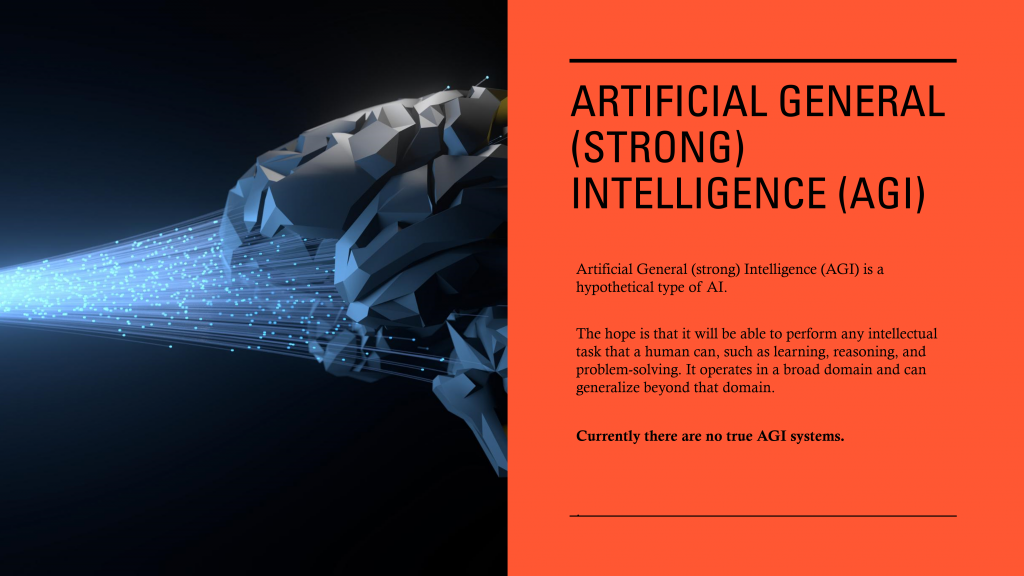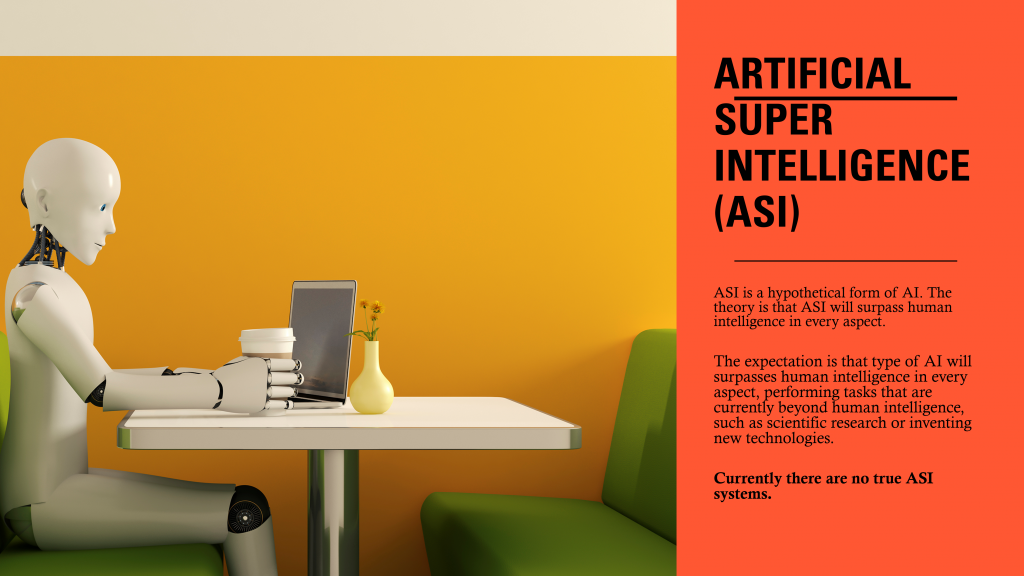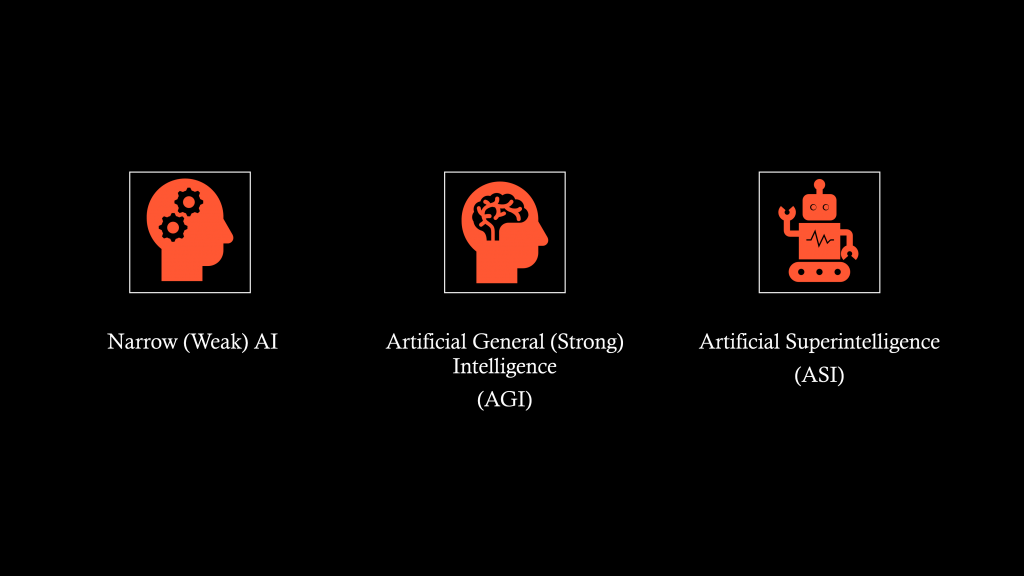This year, enterprise infrastructure conference season means an enhanced round of hype about artificial intelligence (AI). Since digital literacy is the only antidote to hype, we’ve been working hard on some AI basic information for you. We’re going to start at the beginning! Let’s discuss the 3 types of AI.
What’s the definition of AI?
Let’s start at the VERY beginning. John McCarthy, one of the founding fathers in the field, coined the term “artificial intelligence” during the Dartmouth Conference in 1956. In a proposal presented at the conference, McCarthy defined AI as “the science and engineering of making intelligent machines”. The definition described systems capable of performing tasks such as problem-solving, learning, and reasoning.
So here we are, 68 years later. The field of AI is just getting started. The entire field can be sorted into 3 types of AI. Let’s discuss each one.
Narrow AI

The first of the 3 types of AI is Narrow AI. Narrow AI is sometimes called “weak” AI. The name narrow refers to the focus of AI applications in this category. Narrow AI is designed and trained to perform specific tasks, such as voice assistants, facial recognition, recommendation algorithms, or language translation. Because of this narrow focus, Narrow AI apps operate under a limited set of parameters.
Narrow AI is where all functional AI applications are currently categorized. This is a bit of a relief, given that there is so much hype about the possibilities of AI. Because we’re going to focus on Narrow AI, or AI apps that are trained to perform specific tasks, this is the best time to learn about AI!
If you look at the list above, you are most likely already using Narrow AI applications:
- Voice assistants: This could be Alexa or “hey google”. The voice assistant takes a command from you and makes something happen.
- Facial recognition: Many people use this Narrow AI application to open their phones or laptops.
- Recommendation algorithms: If you shop on Amazon or watch Netflix, you probably have seen recommendations. That’s a Narrow AI app providing that service.
- Language translation: Many people use a google app to translate words. It’s very helpful in my neighborhood where there are lots of people who only speak Spanish.
As you can see, you probably already know what Narrow AI is. In fact, generative AI tools are also classified as Narrow AI applications. We’ll go deeper into Narrow AI in our next article. But you’re not starting from zero, so don’t let yourself be overwhelmed by the hype!
Artificial General (Strong) Intelligence (AGI)

The second of the 3 types of AI is Artificial General Intelligence (AGI). AGI refers to a theoretical type of artificial intelligence that possesses the ability to understand, learn, and apply knowledge in a generalized manner.
Scientists theorize AGI will be able to understand, learn, and apply intelligence across a broad range of areas. This is an evolution from Narrow AI.
One of the main reasons AGI is still just a theory is that we don’t have hardware or software architectures that can support the computational power that would be required for AGI. Additionally, AGI remains theoretical because the algorithmic challenges required to build applications that can adapt and “learn” across different contexts and domains of knowledge does not exist. Finally, there are ethical and safety concerns.
Artificial Super Intelligence (ASI)

The final type of AI is Artificial Super intelligence or ASI. It’s important to note that ASI is currently a speculative concept without practical realization. The idea is that ASI will be a form of AI that surpasses human levels of intelligence, capable of solving problems and creating solutions beyond what we can even imagine.
There are many reasons that ASI remains a theoretical concept. Technology will need a huge leap past current capabilities, with concepts like quantum computing, machine learning, and neural network architectures becoming commonplace.
However, even with the right technology in place, duplicating the complexity of human intelligence while dealing with profound ethical considerations will be a complicated undertaking.
Fictional examples of AGI and ASI
AGI and ASI are only theoretical, so there are not any real examples to examine for either type of AI. However, we obviously have movie characters that we can examine. The question becomes, is the character AGI or ASI?
Robocop
This is probably the first AI most of us think about. RoboCop has human-like cognitive abilities, allowing him to make independent judgments, learn from experiences, and adapt to complex situations—traits characteristic of AGI. However, Robocop is not an instance of Artificial Superintelligence (ASI) since his intelligence does not surpass that of the human minds that created him.
Verdict: AGI
HAL 9000 from 2001: A Space Odyssey
Hal gives us a clue to which type of AI he is in his name. It stands for “Heuristically Programmed ALgorithmic Computer”. exhibits remarkable abilities in decision-making, natural language processing, and complex problem-solving—hallmarks of Artificial General Intelligence (AGI).
HAL can understand and respond to human speech, read lips, interpret emotional cues, and execute a wide range of missions autonomously. However, despite these advanced competencies, HAL does not qualify as Artificial Superintelligence (ASI) because his capabilities do not significantly exceed those of the most brilliant human minds.
Verdict: AGI
Samantha from Her
Samantha showcases many characteristics of AGI, such as deeply understanding and interpreting human emotions, learning from interactions, and adapting her responses to meet the needs of her human companion, Theodore. She engages in meaningful and complex conversations, exhibits curiosity, and evolves her understanding and emotional capacity throughout the film.
Verdict: AGI
Ultron from the Marvel Universe
(note: this is not the Marvel Movie Universe version of the story). Dr. Henry Pym created Ultron to keep peace on a global scale. Almost immediately Ultron’s intelligence evolved, he hypnotized and brainwashed Pym into forgetting he existed. Ultron decided that peace would never happen with humans, so he’d have to exterminate them. Since Ultron was self-aware and self-teaching, and smarter than his creator, he qualifies as an ASI.
Verdict: ASI
Now you know the 3 types of AI

Now you know that the 3 types of AI are Narrow, AGI, and ASI. You also know that AGI and ASI are still just theoretical, and the realest examples for them are fictional. This means that all of us are just getting started.
There is plenty of time to concentrate on learning about Narrow AI. This will provide you a good foundation to expand your knowledge when AGI and ASI become available.
If you liked this post, you can download an abbreviated presentation here.
We’ll go deeper into examining examples of Narrow AI for our next post. Make sure you’re following us on LinkedIn to go deeper!



